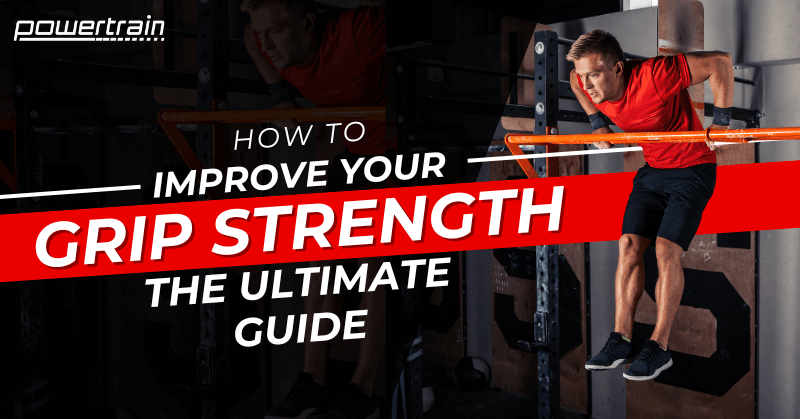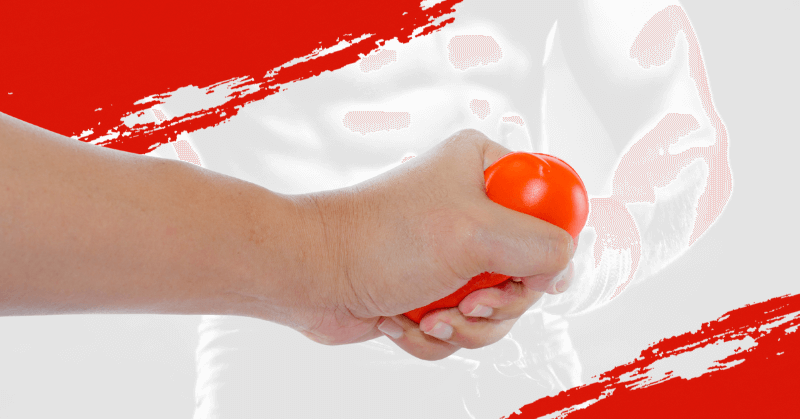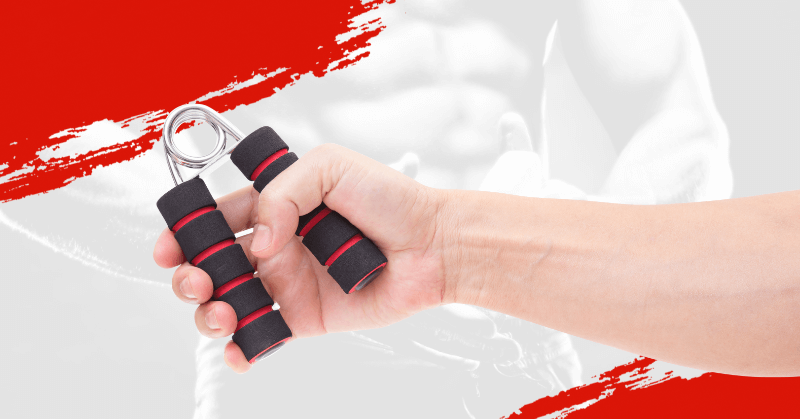How to Improve Your Grip Strength: The Ultimate Guide

Whether you're a rock climber, a weightlifter, a golfer or simply someone who wants to maintain their independence and daily functionality, grip strength is crucial. It not only helps you perform better in sports and other physical activities, but it also allows you to do everyday tasks with ease and comfort, like opening jars, carrying groceries or even typing on a keyboard.
But grip strength isn't just important for practical reasons — it also has significant health benefits. Studies have shown that strong grip strength is associated with a lower risk of cardiovascular disease, better cognitive function and even a longer lifespan.
So if you want to improve your athletic performance, maintain your independence or simply enjoy the many benefits of a strong and healthy body, developing your grip strength should be a top priority.
Benefits of Having a Strong Grip

Improved Athletic Performance
Regardless of what type of athlete you are, grip strength is essential for success. A strong grip allows you to hold onto weights, bars or other equipment more securely, which can help you lift more weight or maintain your grip for longer periods of time.
Reduced Risk of Injury
A strong grip can help prevent injuries in many areas of the body, including the wrists, elbows and shoulders. By strengthening the muscles and tendons in these areas, you'll be less likely to experience strains or sprains when performing physical activities.
Increased Everyday Functionality
Having a strong grip is also important for performing everyday tasks like carrying groceries, opening jars or even typing on a keyboard. It allows you to hold onto objects more securely, which can reduce your risk of dropping or spilling things and improve your overall quality of life.
Better Cognitive Function
Research has shown that grip strength is strongly correlated with cognitive function. By strengthening your grip, you may be able to improve your memory, attention, and overall brain function.
Lower Risk of Cardiovascular Disease
Studies have found that grip strength is a great predictor of cardiovascular disease risk. By improving your grip strength, you may be able to reduce your risk of suffering a heart attack, stroke and other cardiovascular conditions.
Longer Lifespan
Finally, research has shown that grip strength is also a predictor of overall lifespan. People with stronger grips tend to live longer and have a better quality of life in their later years.
How do I test my grip strength?

There are several ways to test grip strength, depending on the equipment and tools you have available. Here are three common methods:
Hand Dynamometer
A hand dynamometer is a device that measures grip strength by measuring the amount of force you can apply to a metal handle. To use a hand dynamometer, hold the handle with your hand and squeeze as hard as you can. The device will display a measurement in pounds or kilograms, indicating your grip strength.
Squeeze Ball
A squeeze ball is a small, hand-held ball that you can squeeze to build and test your grip strength. To use a squeeze ball to test your grip strength, simply hold the ball in your hand and squeeze it as hard as you can. You can also time yourself to see how long you can maintain the squeeze.
Barbell Hold
A barbell hold is a simple test that measures your grip strength and endurance. To perform a barbell hold, hold a barbell with both hands using an overhand grip. Lift the barbell off the ground and hold it for as long as you can. The longer you can hold the barbell, the stronger your grip.
Regardless of which method you use, it's important to warm up your hands and wrists before testing your grip strength to prevent injury. You should also be consistent with your testing method to accurately track changes in your grip strength over time.
Grip Training Guidelines/Tips for Beginners

1. Start with Basic Exercises
If you're new to grip training, it's important to start with basic exercises that target the major muscle groups involved in gripping, such as the forearm flexors and extensors. Some examples of basic grip exercises include wrist curls, reverse wrist curls and farmer's walks.
2. Gradually Increase the Intensity
As your grip strength improves, gradually increase the intensity of your grip training by increasing the weight or resistance of the exercises you're performing. This will help you continue to build strength and avoid hitting a plateau.
3. Use a Variety of Equipment
Don't be afraid to experiment with different types of grip training equipment, such as grip trainers, grip balls and grip sticks. Using a variety of equipment will help you target different muscle groups and keep your workouts interesting and challenging.
4. Incorporate Grip Training into Your Existing Routine
Instead of dedicating an entire workout to grip training, try incorporating grip exercises into your existing routine. For example, you can do wrist curls between sets of bench presses or farmer's walks after your regular leg workout.
5. Focus on Technique
Proper technique is key to effective grip training and preventing injury. Make sure you're using the correct form for each exercise and avoid using momentum or swinging to lift weights.
6. Take Rest Days
Just like any other type of strength training, it's important to take rest days to allow your muscles to recover and avoid overtraining. Aim to work your grip muscles 2-3 times per week, with at least one rest day in between.
7. Stay Consistent
Building grip strength takes time and consistency, so it's critical to stay committed to your training. Set realistic goals for yourself and track your progress to stay motivated and on track.
Remember, grip strength is an essential foundation for many physical activities and can help improve your overall health and functionality. By following these grip training guidelines and tips for beginners, you can start building a stronger grip and reaping the many benefits that come with it.
Basic Holds & Exercises
Basic holds and exercises refer to a set of grip training movements that are simple, easy to perform, and don't require any specialised equipment. These exercises target the muscles in your hands, wrists and forearms, which are essential for activities that involve gripping, pulling and lifting. Here are some examples of basic grip holds and exercises that are great for beginners:
Farmer's Walk
The farmer's walk is a classic grip exercise that involves holding a heavy weight in each hand and walking a certain distance. This exercise targets the grip muscles, as well as the core, legs and upper back.
Wrist Curls
Wrist curls are an isolation exercise that targets the forearm flexors. To perform a wrist curl, sit on a bench with your forearms resting on the bench and your palms facing up. Hold a weight in your hand and curl your wrist towards your forearm, then slowly lower the weight back down.
Reverse Wrist Curls
Reverse wrist curls target the forearm extensors. To perform this exercise, sit on a bench with your forearms resting on the bench and your palms facing down. Hold a weight in your hand and curl your wrist towards your forearm, then slowly lower the weight back down.
Gripper Holds
Gripper holds involve holding a grip trainer or gripper in one hand and squeezing it as hard as possible for a certain amount of time. This exercise targets the grip muscles differently than other exercises, making it a great addition to any grip training routine.
Static Holds
Static holds are exercises that involve holding a weight or object in a fixed position for a certain period of time. Some examples include plate pinches, where you hold two weight plates together with your fingertips, or the dead hang, where you hang from a bar with your hands for as long as possible.
Dead Hang
A dead hang involves hanging from a pull-up bar with your arms straight and your shoulders engaged. This exercise is great for building grip strength and endurance, as well as improving your grip posture.
Plate Pinches
Plate pinches involve holding two weight plates together with your fingertips for a certain amount
Remember to start with lighter weights or resistance and gradually increase as your grip strength improves. It's also important to focus on proper technique and avoid using momentum or swinging to lift weights, as this can lead to injury and less effective training. With consistency and dedication, these basic grip holds and exercises can help you build a strong grip and improve your overall health and functionality.
You May Also Like:

